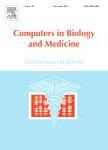版权所有:内蒙古大学图书馆 技术提供:维普资讯• 智图
内蒙古自治区呼和浩特市赛罕区大学西街235号 邮编: 010021

作者机构:INESC TEC - Institute for Systems and Computer Engineering Technology and Science Porto Portugal FCUP - Faculty of Sciences of the University of Porto Porto Portugal ULS - Unidade Local de Saúde São José Lisbon Portugal FCTUC - Faculty of Sciences and Technology of the University of Coimbra Coimbra Portugal
出 版 物:《Computers in Biology and Medicine》 (Comput. Biol. Med.)
年 卷 期:2025年第186卷
页 面:109634-109634页
核心收录:
学科分类:0710[理学-生物学] 1004[医学-公共卫生与预防医学(可授医学、理学学位)] 1002[医学-临床医学] 1001[医学-基础医学(可授医学、理学学位)] 07[理学] 09[农学] 0835[工学-软件工程] 0812[工学-计算机科学与技术(可授工学、理学学位)]
主 题:Electronic health record
摘 要:Traumatic Brain Injury (TBI) is a form of brain injury caused by external forces, resulting in temporary or permanent impairment of brain function. Despite advancements in healthcare, TBI mortality rates can reach 30%–40% in severe cases. This study aims to assist clinical decision-making and enhance patient care for TBI-related complications by employing Artificial Intelligence (AI) methods and data-driven approaches to predict decompensation. This study uses learning models based on sequential data from Electronic Health Records (EHR). Decompensation prediction was performed based on 24-h in-mortality prediction at each hour of the patient s stay in the Intensive Care Unit (ICU). A cohort of 2261 TBI patients was selected from the MIMIC-III dataset based on age and ICD-9 disease codes. Logistic Regressor (LR), Long-short term memory (LSTM), and Transformers architectures were used. Two sets of features were also explored combined with missing data strategies by imputing the normal value, data imbalance techniques with class weights, and oversampling. The best performance results were obtained using LSTMs with the original features with no unbalancing techniques and with the added features and class weight technique, with AUROC scores of 0.918 and 0.929, respectively. For this study, using EHR time series data with LSTM proved viable in predicting patient decompensation, providing a helpful indicator of the need for clinical interventions. © 2025 Elsevier Ltd